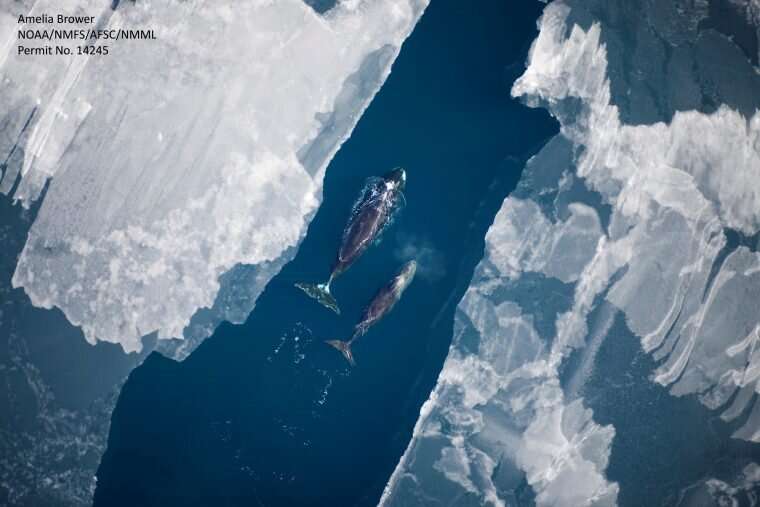Credit: New England Aquarium
Scientists at the New England Aquarium's Anderson Cabot Center for Ocean Life recently published a study that could help researchers learn where protections are needed the most for bowhead whales.
Dr. Dan Pendleton and Dr. Jessica Redfern partnered with Dr. Elizabeth Holmes of the National Marine Fisheries Service and Dr. Jinlun Zhang of the University of Washington for the study, which was published in the journal Diversity and Distributions as the cover article. The team used a highly detailed dataset to model suitable habitat for western Arctic bowhead whales in the Beaufort Sea north of Alaska. The model's map generally matched the location of already documented whale sightings, suggesting that the model can provide useful information for other whale species.
Most species distribution models use data such as ocean depth, temperature, and water chemistry, but with the addition of food—one of the species' primary drivers for inhabiting an area—the Aquarium scientists were able to improve the ability to make these predictions. The key to this model's success was calculations that estimate fluctuations in the whales' prey: zooplankton.
Using prey-centric species distribution models is beneficial for understanding where the whales are now and where they will be in the future. As climate change continues to warm waters and melt sea ice, impacting where the whales' food source will likely be, this research could guide protection efforts as well as shipping routes and fishing guidelines.
The study focused on the western Arctic bowhead whales in the Beaufort Sea north of Alaska, but Pendleton has hopes to use the prey-centric model to track the movements of North Atlantic right whales, a critically endangered species of 356 individuals that migrates along the east coast of the U.S. and Canada. Right whales are threatened by climate change, collisions with ships, and entanglements with fishing lines.
"Warm water that's been coming into the Gulf of Maine has affected the supply of their primary prey," said Pendleton, adding that the shift has pushed some right whales to migrate further north into Canadian waters to feed in late summer. "They're just not in the places that they've been for the last 40 years."
More information: Daniel E. Pendleton et al, Using modelled prey to predict the distribution of a highly mobile marine mammal, Diversity and Distributions (2020). DOI: 10.1111/ddi.13149
Journal information: Diversity and Distributions
Provided by New England Aquarium























